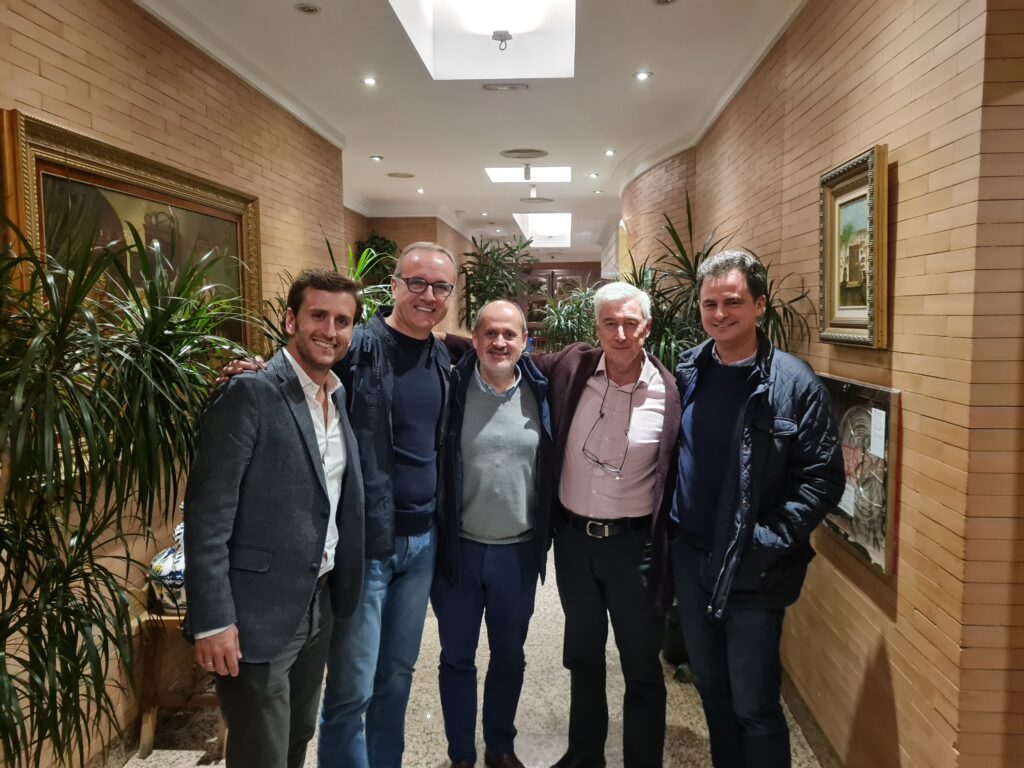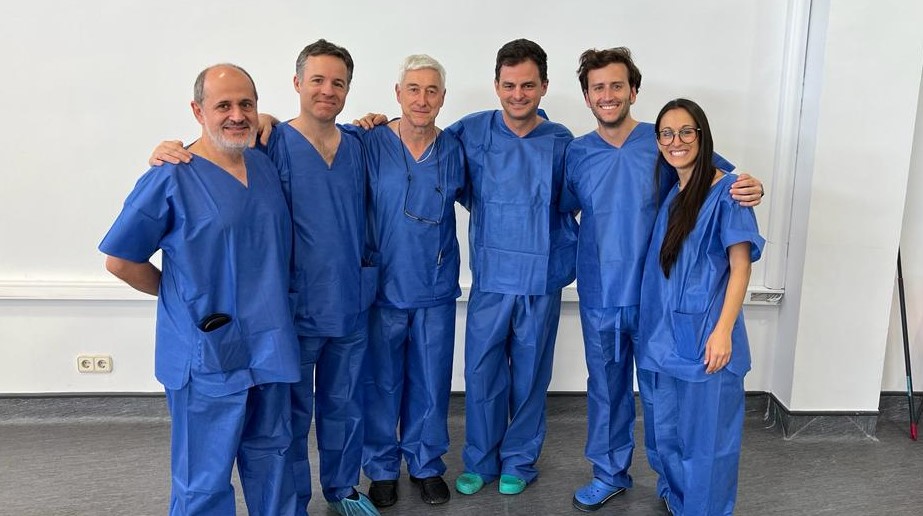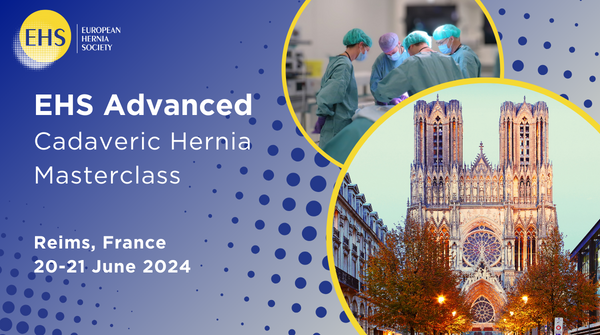‘#ItsNotJUSTaHernia’
My name is Hakan Gök. I am a surgeon based in Istanbul, Turkey, working at a hernia surgery center called Hernia Istanbul®. I visited the ‘Real’ Madrid Team with the EHS travel grant in Madrid, Spain from November 19 to 26, 2023.
To avoid confusion with the famous football team, I will refer to them as the Madrid Group. The Madrid Group consists of surgeons from different hospitals: Dr. Miguel Ángel García Ureña and Dr. Alvaro Robin Valle de Lersundi from Hospital Universitario del Henares, Dr. Luis Blázquez Hernando from Hospital Universitario Ramón y Cajal, and Dr. Javier Lopez‐Monclus, Dr. Joaquín Manuel Muñoz Rodríguez, and Dr. Laura Román García De León from Hospital Universitario Puerta de Hierro Majadahonda. These six surgeons work in three separate hospitals, primarily specializing in abdominal wall and hernia surgery. They are close friends, collaborate extensively, and share a common registry. They diligently upload their cases and, most importantly, publish their findings. Their publications, especially on abdominal wall reconstruction, are highly impressive, and the results are remarkably successful.
I participated in surgeries at the mentioned hospitals each day during my visit. I gained valuable insights, particularly into their approach to large abdominal wall hernias. What I learned will undoubtedly reshape my daily practice.
The technique, formerly known as the Madrid modification and now referred to as Madrid posterior component separation (PCS), involves PCS and cutting the aponeurosis of the transversus abdominis muscle (TA) with a more medial incision without cutting the TA. I was particularly impressed by the dissection technique in the subxiphoid region, reaching the central tendon and diaphragm. As you know, in flank and lumbar hernias, denervation often accompanies the hernia. The Madrid Group systematically prepares a wide mesh landing zone from under the diaphragm to lateral to the psoas and, if necessary, to the contralateral retrorectus space, depending on the size of the hernia, through preperitoneal dissection in all cases. If medial preperitoneal dissection is not feasible, they convert to plan B and perform reverse CST (commonly known as reverse TAR). This allows them to place a 50×50 cm mesh extraperitoneally. Performing such large Loss of Domain (LoD) cases with minimally invasive techniques is quite challenging, and the Madrid Group accomplishes this in a hybrid approach. For instance, in a lumbar or flank hernia, they first perform eTEP Rives Stoppa and PCS to prepare as much space as possible. Afterward, they complete the remaining dissection over the hernia with a short incision and position the mesh. This approach reduces wound morbidity as well.
Prof. Ureña applied the eMILOS technique to a subxiphoid incisional hernia, conducting the dissection preperitoneally and placing a large mesh. The video presentation of this case will be submitted to the EHS Annual Congress in Prague in May 2024.
During my week with them, the Madrid Group organized the 46th Advanced AWR Cadaver Course sponsored by the GORE Company. They have been consistently organising this course approximately four times a year since 2013. What a tremendous effort! I had the opportunity to participate in the course, where we practiced Madrid PCS extensively on cadavers. Particularly in lateral hernias, the Madrid Group creates a Taco structure by initially placing a BioA scaffold to better accommodate the mesh to the curved shape of the lateral abdominal wall. The mesh sits more smoothly on this scaffold. BioA disappears within six months, leaving behind a fibrous layer. They are very satisfied with this usage. In summary, I strongly recommend that anyone performing complex AWR participate in this course.
The Madrid group and their registrars welcomed me warmly and took great care of me. My deepest thanks to them.
Another crucial acknowledgment goes to the EHS. Many thanks to the EHS, I was able to embark on this hernia trip. Travel grants provided by the EHS to its members are truly invaluable.
Madrid is a beautiful city, peaceful and serene, with a good public transportation infrastructure. The museums are extraordinary, and as a fan of Picasso and Miro, I had the pleasure of seeing their beautiful works in Madrid’s museums. You should especially visit Picasso’s ‘Guernica’ at the Reina Sofia Museum.
With regards,
Hakan Gök



